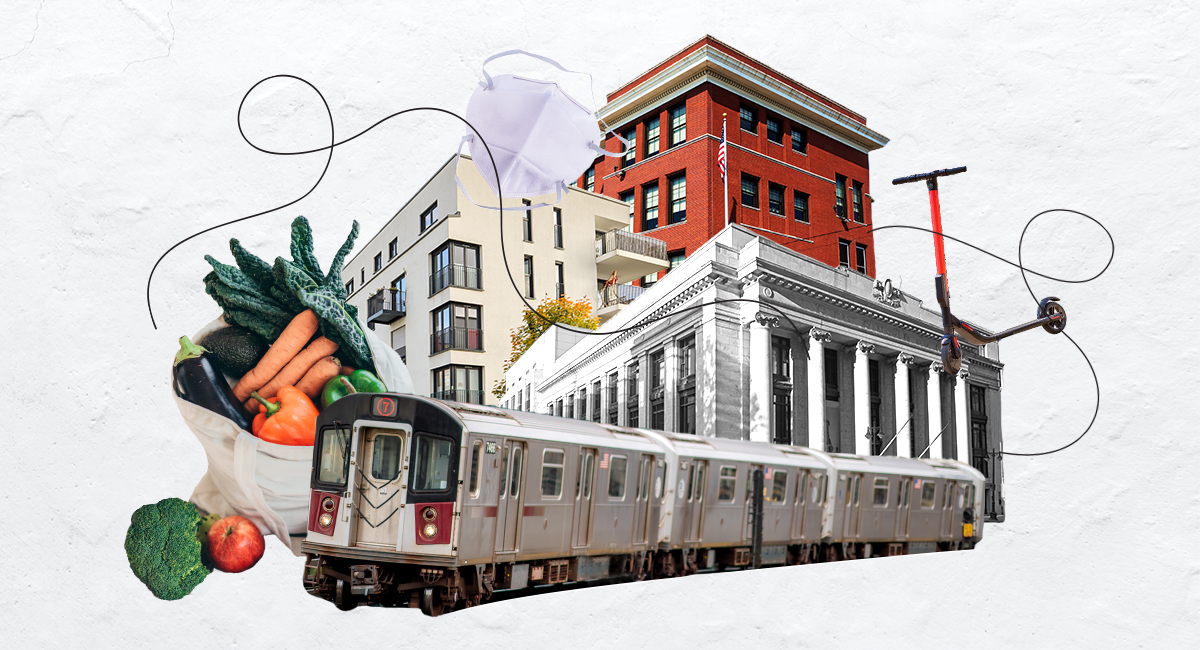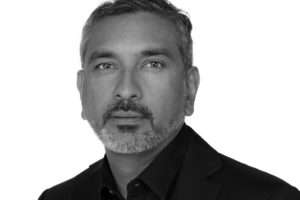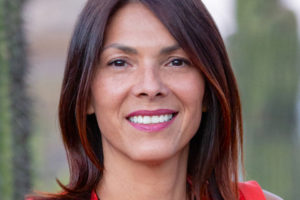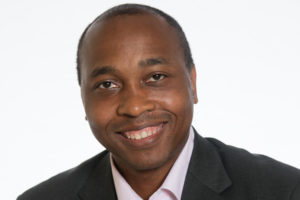
This article is part of the Building Equity series, which explores how architects are working with communities and civic leaders to develop creative, innovative design solutions that fight climate change, systemic racism, and inequities in the built environment. It’s time to show the world what design can do.
Building a modern city takes a collaborative effort, including architects, policymakers and city planners designing housing, transportation, and green space and much more. Blueprint for Better asked four leading architects whose practice focuses on equity and social mobility to share what makes cities equitable, the strategies they're using to make equity a reality, and how they're inspiring others to design more inclusive, community-oriented metropolitans. Here are their perspectives.

Vishaan Chakrabarti, FAIA, is the founder and creative director of Practice for Architecture and Urbanism (PAU). He is the author of A Country of Cities: A Manifesto for an Urban America, published in 2013. In his book and in his most recent TED Talk, he implores us to reimagine cities as we prioritize inclusive and egalitarian spaces. He is currently on leave from his tenured faculty position at the University of California, Berkeley, where he served as the William W. Wurster Dean of the College of Environmental Design. Prior to U.C. Berkeley, he was a professor at Columbia University for a decade.
 Imani Day, AIA, is the founder and principal of Detroit-based RVSN Studios, which focuses on social justice in design and architecture as advocacy. As a member of the executive board of the National Organization of Minority Architects (NOMA) and AIA Detroit, she champions equity within the profession. As a writer/editor, she works to amplify underrepresented voices and uncover issues in the industry. She is the 13th African American woman to become a licensed architect in the state of Michigan and 463rd in the U.S.
Imani Day, AIA, is the founder and principal of Detroit-based RVSN Studios, which focuses on social justice in design and architecture as advocacy. As a member of the executive board of the National Organization of Minority Architects (NOMA) and AIA Detroit, she champions equity within the profession. As a writer/editor, she works to amplify underrepresented voices and uncover issues in the industry. She is the 13th African American woman to become a licensed architect in the state of Michigan and 463rd in the U.S.

Wanda Dalla Costa, AIA, is principal at Tawaw Architecture Collective (TawArc) and institute professor and associate professor at Arizona State University. Her company, Tawaw Architecture Collective, is based in Phoenix. She is a member of the Saddle Lake First Nation and has spent nearly 25 years working with Indigenous communities in North America. She was the first First Nation woman to become an architect in Canada.
 Corey Clayborne, FAIA, is executive vice president and chief executive officer of AIA Virginia. He also serves on the planning commission for Albermarle County, Va. He earned the 2017 AIA Young Architects Award.
Corey Clayborne, FAIA, is executive vice president and chief executive officer of AIA Virginia. He also serves on the planning commission for Albermarle County, Va. He earned the 2017 AIA Young Architects Award.
VISHAAN CHAKRABARTI, FAIA
What makes an equitable city?
Equity is really about equal opportunity. Cities should provide a level playing field for everyone in terms of schooling, housing, infrastructure, health care, public space—just all of the things that create what in my book I call “an infrastructure of opportunity.” It's hard for cities or for society to literally equalize everyone, but equal opportunity is really the key.
You’ve written that we need a new narrative of generosity, not of austerity. How do you propose bringing this to fruition with the historical and contemporary context of structural racism?
Well, in terms of tying these two things together, a lot of communities of color have obviously suffered from grave injustices, from environmental injustice to policing or over-policing to suffering from having the poorest school districts and so forth. I think we need some kind of narrative of generosity to say we're to stop doing that, and we're really going to increase the ability of people to achieve their highest aspirations by equalizing opportunity. This isn't just an airy notion of throwing money away. It's about equal investment in humanity, and that's going to give you great results. We've been living for too long under this false binary that you either have the city of poverty or you have the city of gentrification, and that there's no other way to think about the city.
What would be your elevator pitch to policymakers as they are maybe wrestling with undoing the binary?
Be fearless. I think that a lot of politics is driven by fear. Most of the people I know work in city government, and they are really good people who work very, very hard and are committed public servants that are trying to solve these problems. Government is the primary arbiter of these issues.
What are the non-negotiables in moving cities closer to the more ideal equitable model?
We've got to house the homeless. We need to think about housing, schools, health care, and culture as infrastructure. I really hope we engage the architecture industry. The cost per affordable housing unit is astronomical. We really need to work on bringing those costs down through different construction techniques. I'm not an expert on it, but we need to fix policing in our major cities. Then, part of social mobility is actual mobility and how we transport people around. I would say absolutely housing, policing, schools, transport, and mobility. Lastly, I'd just say public space.
Additional resource:
IMANI DAY, AIA
How can architects help in creating an equitable city?
The most effective way that I have found that equity happens is through healthy collaborative efforts. The best examples are when public and private agencies collaborate together—like nonprofits, philanthropic groups, architects, designers, urban designers, and designers. They’re so crucial because not one player within that group can do much alone. Policy and design only go so far. The community voice is top priority to me, to be represented at the table of collaborators, and then the people who can realize the vision.
What does a large metropolis with such an industrial history, such as Detroit, do to push forward toward greater prosperity and equity?
Detroit, itself, still has the ability to lead by example. It can tell a story of the possibilities of how equity can be built into a city that is rapidly building, and rapidly changing, in a really positive way. After decades of divestment, displacement, and deterioration, there's a really beautiful opportunity here to give everyone a seat at the table to drive progress. There are great opportunities in the city for young designers like me to engage in and lead the process of shaping a more equitable built environment.
How does Detroit get there from the short term versus the long term?
The short-term ways are actively engaging in projects that support a mission of progress. That can include projects of various scales, paired with intentional investment in the revitalization of our neighborhoods. The short-term progress feels very much based on whoever is holding political power. I want to see more of that power dynamic shifting into the hands of our community members and the underrepresented.
In the long term, we as an industry are hopefully beginning to reckon with the racist urban policies and architectural practices of our history. We must find ways to reverse, combat, and dismantle the systemic damage of the racist practices, then [examine] how that actually reinforces all of the rooted inequity in our neighborhoods here, which you can physically see and feel. It's reshaping the urban form to respond to racist practices of our past and working with clients to craft a path forward.
Recommended AIA resource:
AIA Guides for Equitable Practices: Engaging Community
WANDA DALLA COSTA, AIA
How do architects support creating an equitable city?
I think creating an equitable city means that everyone who lives in that city has their needs met. When we work in the field of design, and particularly Indigenous design, what we're seeing is that not everybody's voices have been at the table. It is an inequitable system if all voices are not heard.
What would you say are the non-negotiables in moving toward equity?
It's a pyramid of needs. From the bottom to the top, people need housing, food, social connection, and the connection to nature. This is really important for people in the city. And how do we begin to build places that are inclusive to all segments of the population, no matter what background you come from? How do we begin to build places that are for everyone to socialize together?
How can a greater built world amplify the voices of First Nations and Indigenous people?
We have prioritized this in the work that we do because we have the lived experience of Indigenous communities. If we are going to truly change the city, we need to have the underrepresented segments of the population more vocal and more involved, not only in the design of our cities, but also in teaching at architecture and urban planning schools, changing the paradigm all the way from education through to practice.
Are there other voices that should be further engaged that we're not engaging?
One beautiful tradition in our Indigenous design—and that's something that we abide by really strongly in our firm—and that's intergenerational interactions. We're doing a project where we start with the elders and the youth. Elders are our knowledge-keepers and our moral compass, and the youth are our future generation. It is their voices that we need to integrate into the planning of the future.
Recommended AIA resource:
AIA Guides for Equitable Practices: Engaging Community
COREY CLAYBORNE, FAIA
What do you envision that would be a part of an equitable city?
It's such a broad and complex question. Outside of architecture, we start with some of the basic needs of housing and food securities. More to the design aspect, equity is being able to design a quality sense of place. Architects have a responsibility to design that sense of place, regardless of your income or your annual median income level (AMI). You should be able to live in a place where you feel a sense of pride within the community. That has to start with policy.
How do you propose bringing that change to fruition?
As architects, we have to engage in that process. I've actually started moving away from the words “advocacy” and “lobbying” to “community engagement.” People in today's climate tune out when talking about politics. When you start talking about community engagement and policymaking, people pay attention.
When thinking about examples in the world of equitable cities, what stands out for you?
There's a project here in Charlottesville led by BRW Architects and Habitat for Humanity for a redevelopment of a low-income community named Southwood. It’s a very large mobile home park. This is probably one of the poorest neighborhoods where I live. Using community engagement in a process termed “resident-led redevelopment,” the residents worked side-by-side with the architects in replanning this development. They had buy-in, and they had skin in the game. The architects pretty much redeveloped this entire mobile home park to be a model mixed-income community. They did a phased approach, and these residents had first dibs at these houses, which would have a whole entire scale of AMI. The local government has put money forward to help with this. They've gotten low-income housing tax credits. It's just a tremendous example our community is really proud of.
Recommended AIA resources:
The Architect’s Voice: Advocating for our Profession
A Guide to Engaging with Civic Leaders
The views and opinions expressed in this article are those of the sources interviewed and do not necessarily reflect the official position of The American Institute of Architects, nor the endorsement of any companies listed.